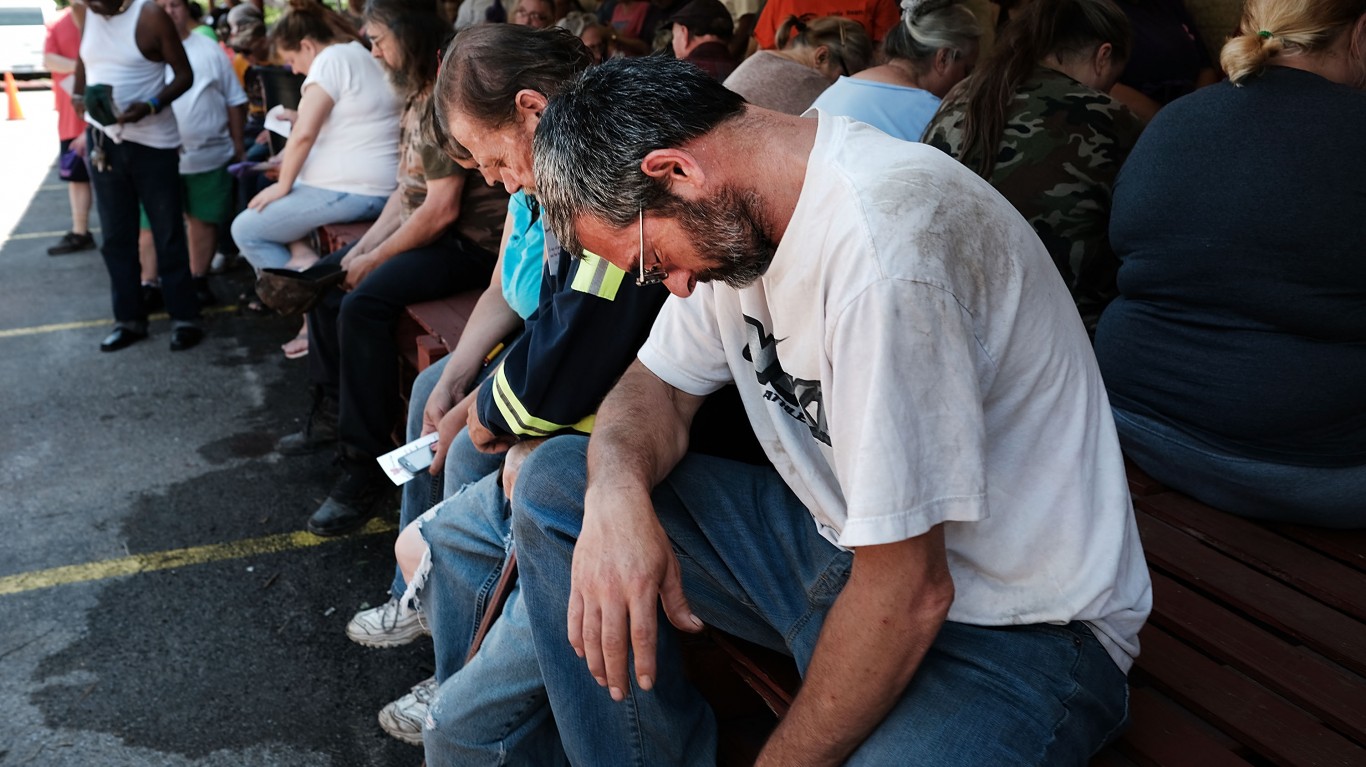
Looking at state economies seems an artificial way to break out pieces of the broader United States. More often, experts look at the breakdown by industry. Done this way, tech dominates business output, which puts tech at the top of the list.
Another way to look at states is via consumption, both by businesses and individuals. Consumer spending makes up two-thirds of the national gross domestic product. In this case, states with larger populations get a clear advantage.
To determine America’s smallest state economy, 24/7 Wall St. reviewed each state’s second-quarter 2021 real GDP per capita, expressed in 2012 dollars, using data from the Bureau of Economic Analysis. The poverty rate for each state came from the U.S. Census Bureau’s 2019 American Community Survey, and August unemployment rates are from the Bureau of Labor Statistics.
The United States has a total gross domestic product of about $19.4 trillion, by far the largest in the world. On a per capita basis, this breaks down to about $59,000 annually. By comparison, Yemen, one of the poorest countries in the world, has a per capita GDP of just $824, according to the most recent data from the World Bank.
It is important to note here that size matters. Larger states usually have larger economies, though this is not always the case. Alaska is the largest U.S. state by landmass but has the fifth-lowest GDP. Massachusetts is relatively small but boasts the second-highest GDP, by our yardstick.
The state with the smallest economy is Mississippi. Here are the details:
- Q2 real GDP per capita: $34,901.51
- Q2 real GDP: $103.87 billion (15th lowest)
- August unemployment rate: 6.00% (13th highest)
- 2019 poverty rate: 19.75% (the highest)
Click here to see which states have the largest and smallest economies.
Travel Cards Are Getting Too Good To Ignore (sponsored)
Credit card companies are pulling out all the stops, with the issuers are offering insane travel rewards and perks.
We’re talking huge sign-up bonuses, points on every purchase, and benefits like lounge access, travel credits, and free hotel nights. For travelers, these rewards can add up to thousands of dollars in flights, upgrades, and luxury experiences every year.
It’s like getting paid to travel — and it’s available to qualified borrowers who know where to look.
We’ve rounded up some of the best travel credit cards on the market. Click here to see the list. Don’t miss these offers — they won’t be this good forever.
Thank you for reading! Have some feedback for us?
Contact the 24/7 Wall St. editorial team.




